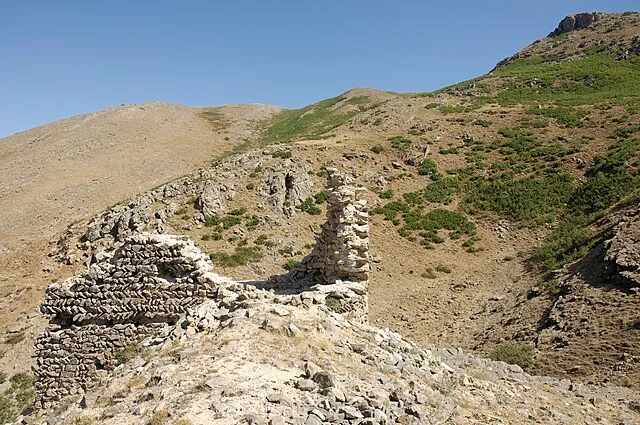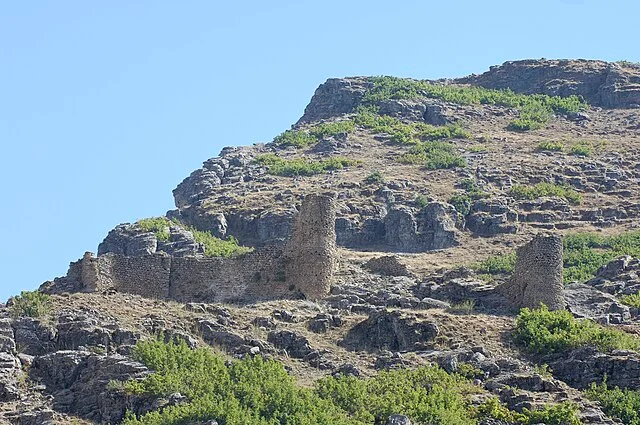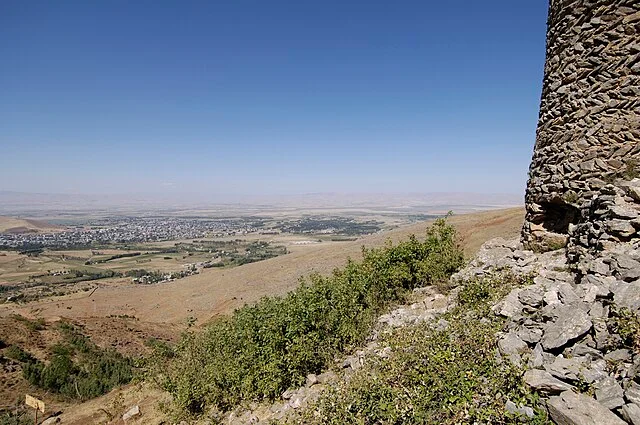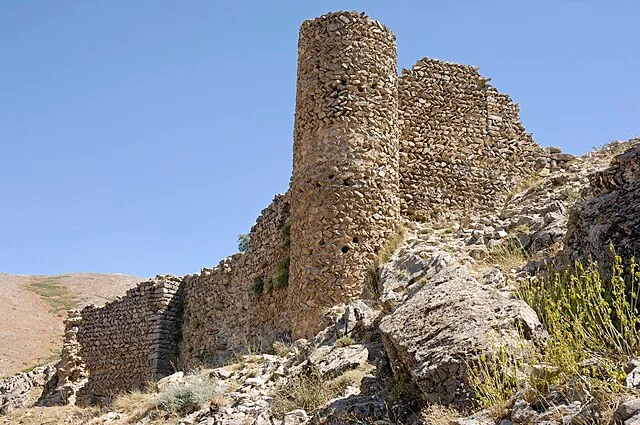Haspet Castle, located in eastern Turkey, serves as an enduring symbol of medieval fortification architecture. Constructed between the 11th and 12th centuries AD, the castle reveals the strategic importance of this region in medieval times. Positioned near the present-day city of Batman, Haspet Castle was historically used to control the surrounding valleys and trade routes.
Get your dose of History via Email
Architectural Significance

The castle features a blend of architectural styles, reflecting the diverse cultures and empires that have controlled the region. The fortress was originally built under the Artuqid dynasty, a Turkic dynasty known for its distinct stonework and defensive designs. Over time, Haspet Castle was modified by successive powers, including the Seljuks and later, the Ottomans. Each new ruling power added unique architectural features, enhancing the castle’s defensive and structural capabilities.
The castle is built primarily with limestone and sandstone, local materials that have endured centuries of erosion. Its walls are exceptionally thick, which helped protect against the weaponry of the time, such as catapults and battering rams. The main entrance, still intact, is marked by a robust gate and defensive tower.
Defensive Features

Haspet Castle’s design prioritizes defense. The structure features several layers of walls, each designed to slow down or repel attackers. Inside the outer walls, the castle includes multiple courtyards that allowed defenders to regroup during an assault. Arrow slits in the walls gave archers protection while maintaining a clear line of sight. The layout also includes escape routes, a common feature in strategic medieval fortresses.
In addition, the castle is strategically positioned on elevated terrain. This elevation offered a panoramic view of the surrounding landscape, allowing inhabitants to spot approaching enemies from a considerable distance. The elevation also made direct assaults challenging for enemy forces, as attackers would have had to navigate upward slopes while exposed to defenders above.
Historical Context

The region surrounding Haspet Castle was an area of frequent military and political conflict, particularly during the Middle Ages. The Artuqids, who built the castle, controlled significant portions of southeastern Anatolia from the 11th to the 12th centuries AD. They constructed Haspet Castle to protect their territories and assert dominance over key trade routes.
Following the Artuqid period, Haspet Castle became part of the Seljuk Empire in the 13th century AD. The Seljuks utilized the fortress to reinforce their hold on eastern Anatolia and to defend against rival empires and nomadic invasions. With the rise of the Ottoman Empire in the 16th century, the castle saw further modifications, though its military importance declined as the empire centralized its power and established larger, fortified cities in the region.
Archaeological Discoveries

Archaeological investigations at Haspet Castle have uncovered several items of historical interest. Pottery fragments, tools, and weapons from the Artuqid, Seljuk, and Ottoman periods give insight into the daily lives of the castle’s inhabitants. Excavations have also revealed the layout of living quarters, storage rooms, and workshops within the castle, suggesting it was largely self-sustained.
Artifacts uncovered at Haspet Castle also reveal trade links with other regions. Items of Persian, Byzantine, and Central Asian origin have been found on-site, indicating that Haspet Castle was more than a military outpost; it also functioned as a node in regional trade networks.
Current Condition and Preservation

Today, Haspet Castle is partially in ruins due to natural erosion and lack of maintenance over the centuries. Despite this, many of its main structures remain intact, including sections of the outer walls, gate towers, and internal rooms. Efforts to preserve and restore parts of Haspet Castle have been limited, although recent interest in Turkish historical sites may lead to further preservation efforts.
Due to its historical and architectural value, Haspet Castle attracts scholars, archaeologists, and tourists interested in medieval history. Its strategic design and layered history offer invaluable insights into the military and cultural dynamics of medieval Anatolia.
Conclusion
Haspet Castle stands as a testament to the complex history of eastern Turkey. Built by the Artuqids and later occupied by various empires, it reflects the region’s role as a contested yet vital area throughout history. Its architectural design and archaeological findings reveal a multi-functional fortress that was essential for military strategy, trade, and regional control. Haspet Castle remains a critical site for understanding the medieval period in Anatolia, offering a window into the military engineering and cultural influences that shaped this era.
Source:

